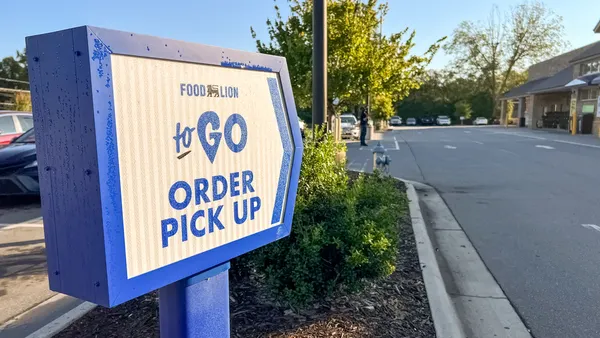Dive Brief:
- The U.S. online grocery retail market is now expected to reach $26.87 billion by 2025, according to Hexa Research. The growth is attributed to technological advancements, service expansion and other innovations along with increasing consumer acceptance.
- The growing number of online grocery shoppers is expected to expand the digital grocery market even further. The research found that the number of U.S. households shopping for groceries online has increased by 14% from 2014.
- Millennials are the driving force behind the growth because they are the largest group of consumers in the country and make up most of the workforce, resulting in high demand for convenient shopping options. Demand for non-food products like home and pet care are expected to contribute to the growth in the online market.
Dive Insight:
The growth of the online grocery market isn’t new information for industry followers but this latest report highlights some important factors driving expansion and what could be holding the grocery industry back from achieving growth on par with other retail industries.
It's well known, for instance, that millennials are a driving force behind e-commerce growth. But how, exactly, to reach these shoppers and boost loyalty with them isn't as often discussed. Hexa Research's report notes that packaging innovations and pricing promotions are two effective strategies. Durable, design-forward packaging similar to what Jet.com recently developed for its Uniquely J brand can be very effective. The report also noted that weekly price promotions can give younger shoppers that crucial nudge to get them shopping — and ultimately building larger baskets — online.
These consumers are also searching for more organic and natural foods, and leading retailers and food producers are putting more emphasis on the promotion of local products, which can be more effectively promoted through e-commerce than in brick-and-mortar stores due to the depth of information landing pages can display, along with data gathering capabilities and supply chain efficiencies. An example of this is Peapod’s collaboration with Farmlogix to source produce from 12 Midwestern farms for its consumers.
Innovations in technology, services and quality control are the main drivers of growth in grocery e-commerce, with home delivery and store pickup expansion bringing millions of consumers into retailer's online ecosystems. Looking ahead, developments in automation and other steps that bring down price while increasing quality and service should accelerate demand.
Leading grocers Walmart, Whole Foods and Kroger are on the front lines of innovation today and looking ahead. Along with its hundreds of store pickup locations, Walmart recently announced the testing of its autonomous delivery with Ford and Postmates and earlier this year partnered with autonomous vehicle maker Waymo to bring consumers to the stores. Amazon, meanwhile, offers delivery and pickup through a growing number of Whole Foods stores, and has sparked a cashier-free trend with its AmazonGo stores.
An earlier report by Nielsen and Food Marketing Institute suggested that the online grocery market would reach $100 billion by 2025 and a more recent report by IGD predicted that e-grocery market share would double in the next five years. This latest report doesn't have quite as optimistic an outlook, which could reflect a more conservative outlook on growth for a channel that still struggles to sway consumers used to making regular store trips themselves. Nevertheless, the report cites a fast-evolving industries and growth drivers similar to what other firms have forecast. It all adds up to an opportunity that retailers have to invest in now or risk getting left behind.













